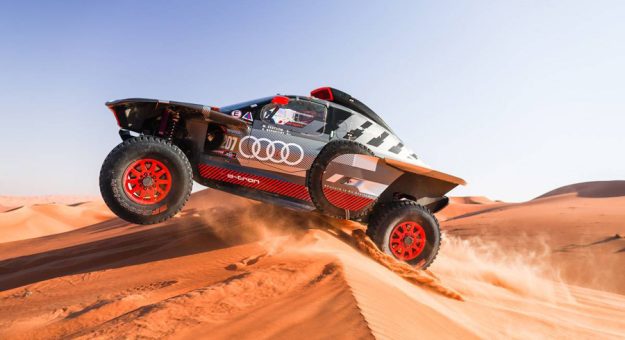The 46th edition of the Dakar, the fifth to be organized in Saudi Arabia, has finished after a total distance of almost 8,000 kilometres that tested the riders, drivers, co-pilots and crews.
The major winners of the 2024 edition have each, in their own way, taken advantage of teams capable of building success based on their collective strength.
Among the favorites in the Monster Energy Honda clan, American Ricky Brabec won a second title following his triumph in 2020, by resisting Ross Branch on his Hero, the first Indian bike to grace the Dakar podium, onto which Adrien Van Beveren climbed for the first time in his career, with third place, also riding a Honda.
In the car category, there was an unexpected consecration for the hybrid Audi driven by Carlos Sainz.
In his duel with Sébastien Loeb, who in the end finished third, the Spaniard picked up his fourth title thanks partially to the back-up provided by his team-mates Stéphane Peterhansel and Mattias Ekström, as El Matador finished with a lead of 1 hour and 20 minutes over Belgian Guillaume de Mevius.
On the final stage, the battle in the Challenger class was turned on its head, to the detriment of Mitch Guthrie and in favor of Cristina Gutiérrez, who became the first female driver to win a Dakar title since Jutta Kleinschmidt in 2001.
In the SSV category, Xavier de Soultrait also won by the narrowest of margins, having failed to win in his career on a motorbike but taking victory in a Polaris driving for the Sébastien Loeb Racing team, which will be a small consolation for the man from Alsace.
Lastly, thanks to Martin Macík, the truck category witnessed the Czech Republic’s grand return to the summit of the rally, 23 years after the country’s last triumph was earned by Karel Loprais, whose nephew Aleš Loprais finished as runner-up to Macík.
In total, 239 vehicles (versus 340 that took starter’s orders) reached Yanbu, including 96 bikes (vs 132), 7 quads (vs 10), 55 Ultimate class cars (vs 70), 3 Stock class cars (vs 3), 29 Challenger class cars (vs 42), 28 SSVs (vs 36) and 21 trucks (vs 47).
Among them, the riders, drivers and crews of 182 vehicles were able to climb onto the final podium to receive a finisher’s medal, with the remainder not having completed the entirety of the route.
Finally, the 4th edition of the Dakar Classic, which brought together 78 vehicles, finished with 71 crews. Spaniard Carlos Santaolalla Milla won the race for regularity. The Mission 1000 terrains challenge enabled 10 vehicles powered by innovative alternative engine technologies to tackle the of the Dakar and look ahead to the future.
